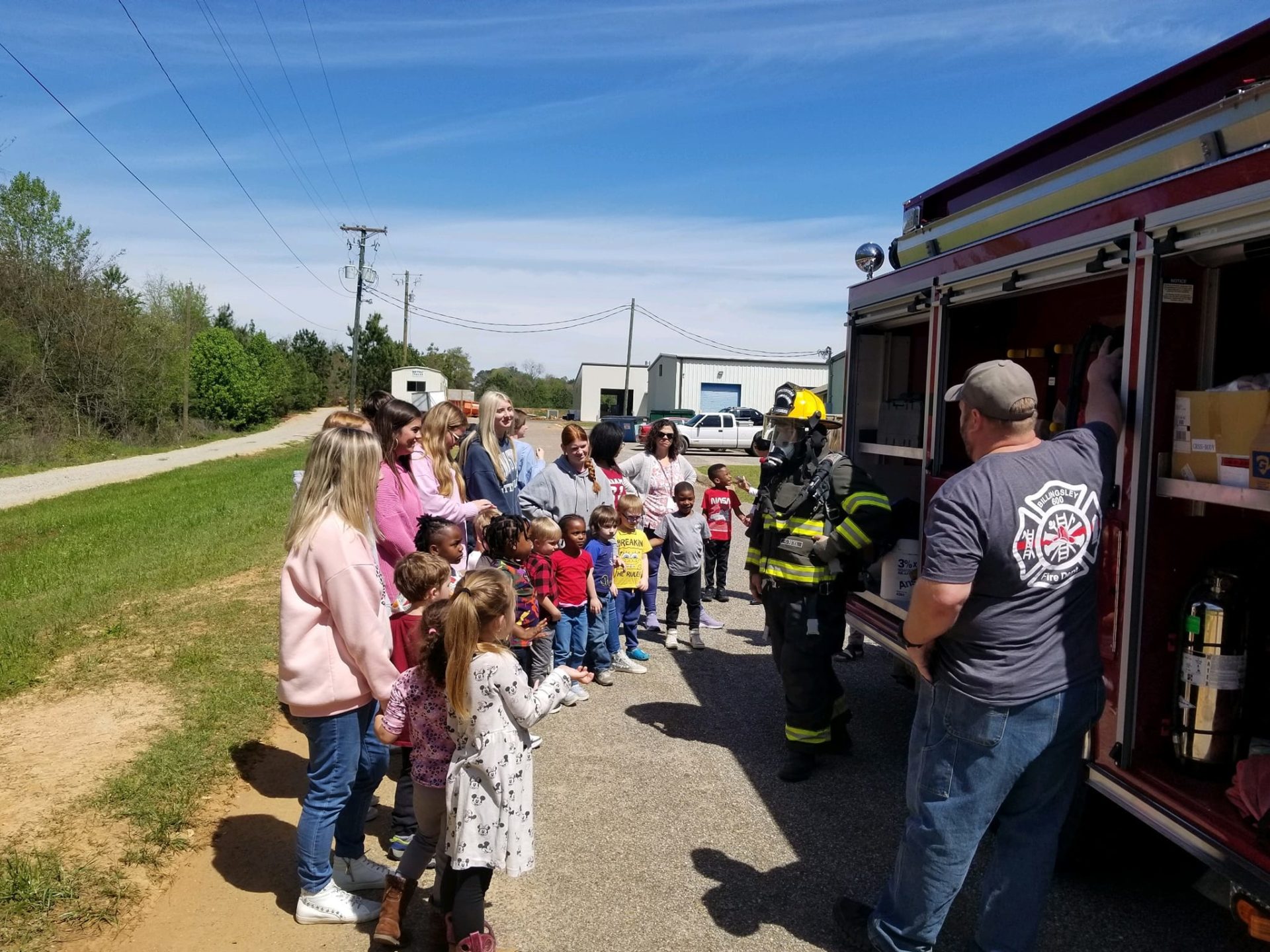Awareness of environmental issues is vital for the sustainability of your community, and as a volunteer fire department, you have a unique opportunity to lead the charge. By actively engaging with residents, you can foster a culture of environmental consciousness through education, community events, and partnerships. In this post, we will explore effective strategies that you can implement to promote environmental awareness, ensuring that your community is well-informed and prepared to tackle ecological challenges together.
The Role of Volunteer Fire Departments in Community Engagement
Before you consider the impact of volunteer fire departments, it’s necessary to recognize their pivotal role in fostering a sense of community. These organizations not only respond to emergencies but also connect with residents on various levels, making them key players in promoting environmental awareness and education. By actively engaging with your community, you can influence attitudes and behaviors toward environmental stewardship.
Building Trust and Relationships
Between the fire department and community members, trust is a fundamental element that enhances engagement. By consistently demonstrating reliability in emergency situations and being present during non-emergency interactions, you can establish rapport, making it easier to share vital environmental messages. Building this trust fosters open communication, ensuring your community feels comfortable participating in sustainability initiatives.
Organizing Community Events
Among the various methods by which volunteer fire departments can encourage environmental awareness, organizing community events stands out. These gatherings serve as a platform for education, allowing you to engage with residents on topics like fire safety, disaster preparedness, and environmental conservation.
Community events can include workshops, clean-up drives, tree-planting days, and informational sessions that highlight environmental issues relevant to your area. By involving local schools, businesses, and organizations, you position your department as a leader in promoting environmental responsibility. These events not only bolster participant knowledge but also strengthen connections within your community, creating an active network dedicated to safeguarding the environment.
Environmental Education Initiatives
One effective way volunteer fire departments can foster environmental awareness is through targeted education initiatives. By implementing programs that inform community members about local environmental challenges, you can empower them to take action. This engagement not only increases awareness but also enhances public participation in sustainable practices, encouraging collective responsibility for the environment.
Workshops and Training Sessions
The implementation of workshops and training sessions can significantly boost environmental education in your community. These interactive events allow you to educate residents about fire safety while simultaneously discussing eco-friendly practices. You can cover topics such as wildland fire prevention and the importance of proper waste disposal, equipping participants with knowledge they can apply in their daily lives.
Educational Materials and Resources
Beside hands-on training, providing educational materials and resources serves as a valuable means to reinforce your environmental message. Distributing brochures, flyers, and guides not only informs individuals but also offers them a take-home reference that can stimulate further discussion within your community.
Consequently, these educational materials can cover various topics, like the significance of biodiversity, waste reduction, and effective recycling methods. By making these resources accessible, you are making it easier for people to engage with environmental issues and incorporate sustainable practices into their routines. Consider partnering with local organizations to create tailored content, ensuring your materials address specific concerns pertinent to your community, thus fostering a deeper connection and commitment to environmental stewardship.
Partnerships with Local Environmental Organizations
You can enhance your fire department’s impact on environmental awareness by forming partnerships with local environmental organizations. Collaborating with these groups allows you to share resources, knowledge, and experiences, ultimately benefiting both your department and the community. Together, you can work on projects that educate the public about environmental issues while fostering a deeper understanding of their significance in fire safety and prevention efforts.
Collaborative Projects
For your volunteer fire department, engaging in collaborative projects with local environmental organizations can lead to innovative solutions and impactful outreach. Host joint workshops or community events that focus on eco-friendly practices, fire safety, and disaster preparedness. Such collaborations not only build awareness but also strengthen community ties and create a network of committed individuals working towards a common goal.
Networking for Greater Impact
Organizations that focus on environmental initiatives can significantly enhance your department’s outreach capabilities. By forming networks, you can connect with various stakeholders, including government entities, schools, and other non-profits, to foster an environment of collective action.
And as you develop these networks, you will find opportunities for shared grants and resources that can amplify your efforts. Coordinating with other organizations allows you to access a broader platform, enabling your fire department to reach more community members effectively. This collaborative approach fosters a sense of unity and encourages a shared commitment to environmental stewardship, ultimately benefiting your entire community.
Promoting Sustainable Practices
Now is the time for volunteer fire departments to embrace sustainable practices in their operations and outreach. By integrating eco-friendly initiatives, you can lead by example and influence your community positively. Not only do these practices benefit the environment, but they also enhance the department’s overall efficiency and resilience, creating a model for others to follow.
Green Station Initiatives
Sustainable fire stations can significantly reduce your carbon footprint. Implementing energy-efficient lighting, solar panels, and rainwater harvesting systems are just a few ways you can enhance your station’s sustainability. Engaging your community in these initiatives also raises awareness about the importance of environmental stewardship.
Eco-friendly Firefighting Techniques
On the forefront of innovation, eco-friendly firefighting techniques prioritize the environment alongside efficacy. Techniques such as using biodegradable fire suppression agents and employing advanced water-efficient methods not only protect lives but also minimize ecological damage when combating fires.
Further, adopting a proactive approach to fire prevention can include implementing controlled burns to reduce fuel loads, utilizing drones for reconnaissance to identify fire risks, and training your team in sustainable practices. By harnessing these techniques, you not only improve firefighting effectiveness but also reduce the environmental impact of your operations. Sharing these insights with the community can foster a culture of sustainability that extends beyond the emergency response realm.
Utilizing Social Media for Awareness
Unlike traditional communication methods, social media offers a dynamic platform for volunteer fire departments to engage with their communities. By leveraging platforms such as Facebook, Twitter, and Instagram, you can share important updates, promote environmental initiatives, and inspire conversations around sustainability efforts. Creating visually appealing posts, engaging stories, and informative videos can increase awareness and participation in eco-friendly activities, fostering a stronger connection with your audience.
Effective Communication Strategies
Beside using compelling visuals, employing clear and concise language is important for effective communication. You can enhance your messaging by utilizing hashtags relevant to environmental issues, thus reaching a broader audience. Regularly scheduling posts ensures that your information remains fresh and engages your community consistently, driving interest and involvement in environmental awareness campaigns.
Sharing Success Stories
The power of storytelling cannot be underestimated when it comes to promoting environmental awareness. Sharing success stories from your department’s initiatives helps to inspire and motivate others to get involved. By highlighting tangible outcomes such as community clean-ups or fire prevention efforts that also protect local ecosystems, you demonstrate the positive impact of collective action.
Indeed, sharing success stories can be one of the most effective ways to promote environmental awareness. By showcasing the results of your efforts, you not only celebrate your achievements but also encourage community members to take part in similar initiatives. Testimonials from volunteers, before-and-after photos, and statistics illustrating positive changes can resonate deeply with your audience, making the case for environmental stewardship compelling and relatable. As you highlight these narratives, you foster a sense of pride and ownership within your community, reinforcing the importance of sustainable practices in everyday life.
Measuring Impact and Success
Not only is it important to implement environmental initiatives, but also to effectively measure their impact and success in your community. Tracking changes in community behavior, participation rates in programs, and environmental metrics can provide valuable insights. You can utilize this data to refine your strategies, ensuring your efforts align with community needs and values while enhancing the overall effectiveness of your programs.
Community Feedback and Surveys
About gathering feedback from community members is imperative for understanding the effectiveness of your initiatives. Implementing surveys can help gauge public opinion on environmental issues and measure awareness levels before and after your campaigns. By analyzing this feedback, you can pinpoint areas that require improvement and foster a sense of ownership among community members in your environmental efforts.
Long-term Goals and Adjustments
Any successful environmental initiative should incorporate long-term goals and regular adjustments based on community feedback and measurable outcomes. Setting clear objectives will guide your actions while fostering ongoing community engagement.
For instance, after assessing the results of your environmental initiatives, you might identify areas that need stronger focus or different approaches. You could also discover new opportunities for collaboration or additional community needs. Adapting your strategy accordingly not only enhances your effectiveness but also demonstrates a commitment to continuous improvement, ensuring that your impact remains relevant to your community over time.
Conclusion
So, as a member of your local volunteer fire department, you have a unique opportunity to enhance environmental awareness in your community. By organizing educational workshops, participating in local sustainability events, and collaborating with environmental organizations, you can inspire others to adopt eco-friendly practices. Engaging youth through school programs and leveraging social media platforms can help spread your message even further. Ultimately, your efforts can foster a sense of responsibility toward the environment, helping to create a more sustainable future for everyone in your area.


